When exploring intersections between environmental and literary studies, we found the theme of the nightshade trees. The trees are so important to “You” the narrator and the city that they reappear throughout the novella.
While some passages obviously tell You’s memory of the nightshade trees in the high school years, others are not. In particular, our Stop Zero passage is found last. It is not about the trees on Aiguo West Road (later on Dadu Road), but about THE NIGHTSHADE TREE. Long before You tells personal memory of the nightshade trees, this passage (in classical Chinese) is singled out from the histories, the legends, the collective memories. We realize how it prepares us for a more intimate story so that when we read the latter, we feel familiar with the tree. Thus we also set this passage up as the starting point of our reading route.
Map: 大臺北鳥瞰圖 by 大窪四郎

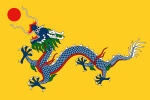
Page 127. A tree called the nightshade was so tall it blocked out the sun, so big it required several linked arms to encircle its trunk. It grew by the lakeshore. A Dutchman was rumored to have stuck his sword into the tree, which grew around it; that’s how the place got its name, Jiantan—Sword Lake.
页 173/144. 有树名茄冬,高耸障天,大可数抱,崎于潭岸,相传荷兰人插剑于树,生皮合剑在其内,因以为名。
[/et_pb_vertical_timeline_item] [/et_pb_vertical_timeline]
nightshade trees
The scientific name of the nightshade tree is Bisxhofia javanica Blume. The trunk is reddish, and thus it is also called red cedar:
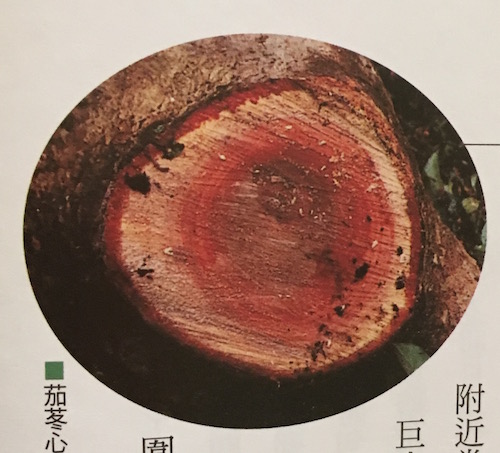
Image Credit: 潘富俊《福爾摩沙植物記》(Page 26)
Section 1
The first section of our reading route is You’s good memories of the nightshade trees. The memories began with, ironically, destruction. It was the Japanese government’s tearing down of a Chinese city wall, and it was recalled when You talked about Beishihu where the bricks of the wall were made. On the map we mark what was the location of southern city wall but later a green wall of the nightshade trees. To its north and south we also mark the all-girls high school (today’s Taipei First Girl’s High School) and the all-boys high school (today’s Taipei Municipal Jianguo High School).
Map on the left: a close-up of 大臺北鳥瞰圖 by 大窪四郎 (published by 南天書局)

Page 147a. They dissembled the bricks and tiles laboriously fired in Beishihu and built three-lane streets, along which were planted nightshade trees, which were popular all over the island, and betel palms and coconut trees to give them a southern flavor, 150 of them on Aiguo (East)[West] Road and 100 on Xinyi Road.
页 190a/158a. 他们拆了北势湖辛苦烧成的砖瓦,辟成三线道路,植上一五〇株(爱国西路)一〇〇株(信义路)南岛遍见的茄冬和代表南国风情的槟榔椰子树。
[/et_pb_vertical_timeline_item][et_pb_vertical_timeline_item title=”Stop 2. A green wall…” use_read_more=”off” animation=”off” text_font_select=”default” text_font=”||||” headings_font_select=”default” headings_font=”||||” use_border_color=”off” border_style=”solid”]

Page 147b. Half a century later, the nightshades had become a green wall, the demarcation line where your all-girls high school made peace with one of the all-boys high schools. You and A often arranged to meet boys there. The wide safety island was paved with red bricks; white wrought-iron benches encircled the tree trunks, and the streetlights, no matter how bright, could not penetrate the dense shadows from the nightshade trees.
页 190b/158b. 茄冬半世纪后长成绿色城墙,是你们女校与男校最常议和的楚河汉界,你和A就常跟他们约在那里见,开阔的安全岛上铺著红砖,有绕树一匝的白铁椅,再亮的路灯也穿透不了浓密的树荫。
[/et_pb_vertical_timeline_item] [/et_pb_vertical_timeline]
three-lane streets
The three-lane streets indeed were good places for dating. A 1933 Taiwanese song 月夜愁 sings about this. Here is a postcard of the southern three-lane street:

Image Source: 臺灣記憶
demarcation line
The demarcation line in Chinese is 楚河汉界, which literally means “the river of Chu, border of Han.” It is known to refer to the line between the sides on the board of Chinese chess 象棋.
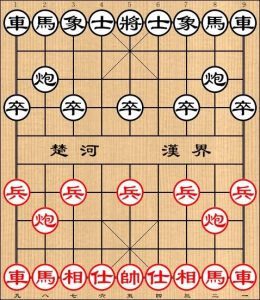
Image Source: 弈智棋院
Section 2
Our reading route dramatically turns here: The nightshade trees suddenly disappeared as did every good memory. The green wall seems to remain there on the World Imagery ArcGIS Esri map, but the trees are replaced by the camphor trees 樟树, scientific name Cinnamomum camphora.
Map on the left: a close-up of 大臺北鳥瞰圖 by 大窪四郎 (published by 南天書局)

Page 149. When you walked by your green wall one day you discovered—oh my god—the century-old night-shade trees had disappeared overnight, all for the ostensibly justifiable reason of widening the street. You were so grief-stricken, so distressed, you felt as if you’d lost your best friend.
页 191/159. 当有一日你路过你们的绿色城墙,发现天啊那些百年茄冬又因为理直气壮的开路理由一夕不见,你忽然大恸沮丧如同失了好友。
[/et_pb_vertical_timeline_item][et_pb_vertical_timeline_item title=”Stop 4. Reluctant to roam…” use_read_more=”off” animation=”off” text_font_select=”default” text_font=”||||” headings_font_select=”default” headings_font=”||||” use_border_color=”off” border_style=”solid”]

Page 152. Except for the one route that was indispensable in your daily life, you had become reluctant to roam, afraid of discovering more things like the disappearance of a line of century-old nightshade trees.
页 195/162. 除了平日不得不的生活动线之外,你变得不愿意乱跑,害怕发现类似整排百年茄冬不见的事。
[/et_pb_vertical_timeline_item] [/et_pb_vertical_timeline]
trees on Aiguo West Road
The trees on today’s Aiguo West Road are camphor trees 樟树, scientific name Cinnamomum camphora (L.) Presl. The close-up image shows their typical trunk.
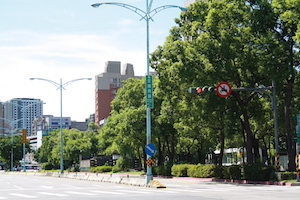

Photo Credit: Leah Suffern
widening the street
other reasons
Section 3
On our trip we followed the story route to visit Dadu Road where the nightshade trees were said to be transplanted to. We did not find them, but Shih laoshi’s parents in Taiwan found them well. They were not as strong as THE NIGHTSHADE TREE in our Stop Zero passage, which “required several linked arms to encircle its trunk.” However, they were much better than what “You” saw. If we did not read the novella, we would not have known where they were from and what memories they shared, just as how we forgot what happened to the generation of our grandparents.

Page 161. But you never brought up the past, for that was too much like the nightshade and sweet gum trees, which had been either transplanted or taken down.
页 202/168. 独独不再提过往,过往很像那些被移植或砍掉的茄冬和枫香。
[/et_pb_vertical_timeline_item][et_pb_vertical_timeline_item title=”Stop 6. To Dadu Road…” use_read_more=”off” animation=”off” text_font_select=”default” text_font=”||||” headings_font_select=”default” headings_font=”||||” use_border_color=”off” border_style=”solid”]

Page 204. You were hoping that the bus would take the Dadu Route, for the guidebook said that the hundred-year-old nightshade trees on the western line of the Sansen-dō had all been transplanted to Dadu Road.
Page 205. Could the eucalyptus trees along the highway also have been transplanted to Dadu Road?
页 236/197a. 你希望走的路线会是大度路,因书上说三线道路(西)[南]线的那些百年茄冬都移植到大度路了。
页 237/197b. 夹道的油加利树也移到大度路了吗?
[/et_pb_vertical_timeline_item][et_pb_vertical_timeline_item title=”Stop 7. Like injured veterans…” use_read_more=”off” animation=”off” text_font_select=”default” text_font=”||||” headings_font_select=”default” headings_font=”||||” use_border_color=”off” border_style=”solid”]

Page 209. You opted for an express bus, expecting it to take Dadu Road, for you were determined to see the old nightshade trees that had sheltered you girls all those nights when you were sixteen and seventeen and had never once laughed after listening to all the silly things you said to them. If those old trees were still there, then many other things would still be around. It did not matter whether or not you saw them, such as A, such as the Old Moriyoshi Tofu shop by Seiryō-ji, such as the white oaks imprinted on the heart of Thoreau before his death. The bus passed Dadu Road, driven by yet another drunk driver similarly focused on pocketing bus fares. Given that there were no bus stops or stoplights on Dadu Road, at that speed, if the bus had had wings it would have soon been airborne. You sped alongs, spotting old trees that looked like injured veterans, the ends of their amputated limbs wrapped in straw, as if bandaged. The guidebook said they were transplanted in the third year of the Heisei era, but why did they show no signs of putting down roots and sticking around? Except for a very few that had small cluster of green leaves, most had turned into specimens and models, like the skeleton under the coptis tree by Red Tower.
页 240/200. 你选了一辆直达客运,料想它可能会走大度路,你不死心的想看一看那些十六、七岁的好多夜晚曾荫覆过你们、听了无数傻言傻语却都不偷笑的老茄冬,那些老树们在着的话,很多东西就都还会在,见不见面也没有关系,像A,像清凉寺门前的老森嘉豆腐铺,像印在死前的梭罗心版上的白橡树。在另一名同样专心吃票的司机的酒后驾车状态中,车过大度路。大度路没有站牌没有红绿灯,车速快得给插两张翅膀就可以起飞了。那样的速度里,你看到那些老伤兵似的老树们,裹绷带般以稻草困扎截肢后的肢干,书上说他们是平成三年移来这里的,如何没有半点打算落地生根的样子,除了少数还有小簇的绿叶,大多根本已经变成标本模型了,就像红楼那株苦楝树下的白髑髅。
[/et_pb_vertical_timeline_item][et_pb_vertical_timeline_item title=”Stop 8. Oh no…” use_read_more=”off” animation=”off” text_font_select=”default” text_font=”||||” headings_font_select=”default” headings_font=”||||” use_border_color=”off” border_style=”solid”]

Page 211. Oh no, has even Guo Yimei, next door, been moved to Dadu Road?
页 242/202. 天啊隔壁的郭怡美難道又被搬去大度路了?!
[/et_pb_vertical_timeline_item] [/et_pb_vertical_timeline]
nightshade trees on Dadu Road
The nightshade green wall on Dadu Road:

Photo Credit: Chien-Hui Shih and Lu-Ti Lin
the third year of the Heisei era
The third year of the Heisei era is 1991. Japanese era in Taiwan ended in 1945. “You” used the Japanese era name Heisei because “You” was reading a Japanese guidebook.
Guo Yimei
Guo Yimei was a shop in Dadaocheng area. We could not find it either when we visited Dadaocheng. Has it been undergoing a renovation since “You” visited there?
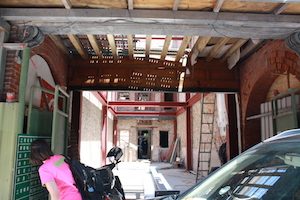




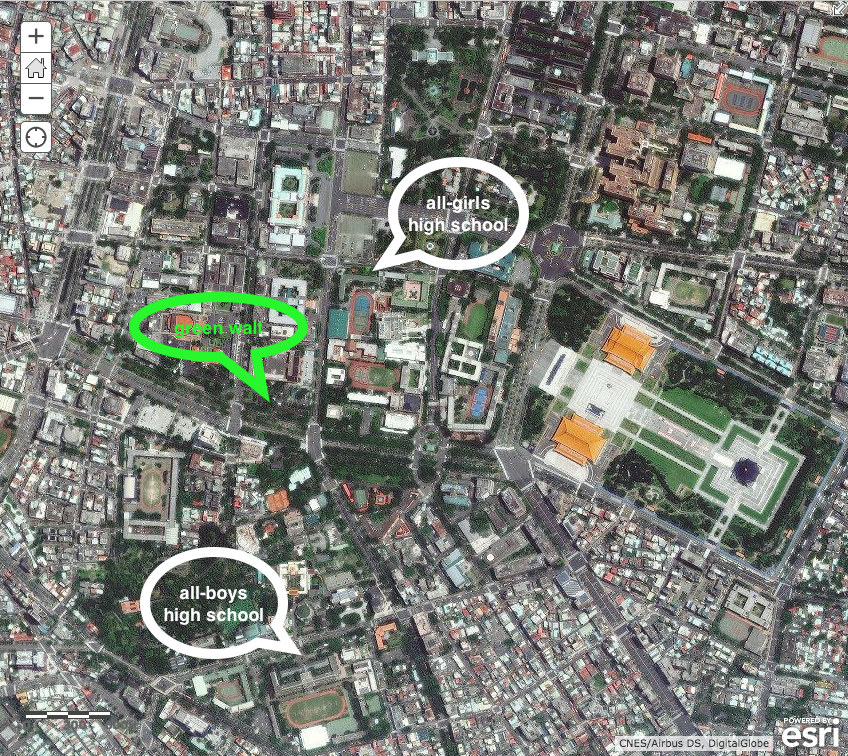
0 Comments